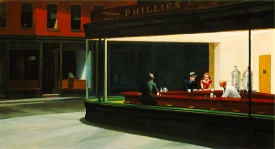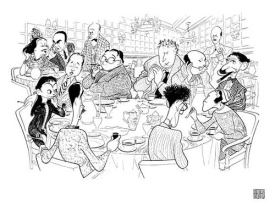
I’ve enjoyed reading Ana Marie Cox’s tweets and posts from the campaign trail these past few months. Ana does a great job of showing us what it’s like to be on the bus, or on the plane with the candidate. While her work for Time Magazine is interesting, I found her pie chart on how a journalist spends time on the campaign trail to be one of her most revealing missives. Is being there really being there? Is it proximity or access that really matters in doing journalism? How much time does a journalist really get to spend with a candidate– per 24 hour period, how much journalism really goes on?
Perhaps politicans need a Regulation FD, something like the disclosure requirements for public companies. Here’s how Wikipedia describes the regulation:
The U.S. Securities and Exchange Commission‘s (SEC’s) Regulation Fair Disclosure, also commonly referred to as Regulation FD or Reg FD was an SEC ruling implemented in October 2000 ([1]). It mandated that all publicly traded companies must disclose material information to all investors at the same time.
The regulation sought to stamp out selective disclosure, in which some investors (often large institutional investors) received market moving information before others (often smaller, individual investors).
If politicians are public servants, perhaps it makes sense to regulate transparancy and fairness in their public communications the same way we do with public companies. Regulation FD is meant to combat information asymetry in the stock market. Selective disclosure results in some investors having better and more complete information with which to judge trading opportunities. The system of journalism we have now requires both proximity and access to get the story. With that kind of scarcity implicit in the information exchange, there are lots of power plays and games that go on. The analogy to financial markets is quite exact. Large institutional investors had better access, could trade soft dollars or other favors for information that resulted in advantaged trading opportunities. Our big media companies have that same relationship with political candidates.
On July 30, 2008 the SEC provided guidance on the role of Blogs, RSS and other Network-based communications in compliance with Reg FD. Public companies may use blogs and feeds to release material information in place of, or in addition to, the traditional wire services and conference calls. While this is currently a description of one-way communication, it’s well known that the Network is a two-way medium. It’s only a matter of time before the other shoe drops.
A man comes in late at night to a lodging house, rather the worse for wear. He sits on his bed, drags one shoe off and drops it on the floor. Guiltily remembering everyone around him trying to sleep, he takes the other one off much more carefully and quietly puts in on the floor. He then finishes undressing and gets into bed. Just as he is drifting off to sleep, a shout comes from the man in the room below: “Well, drop the other one then! I can’t sleep, waiting for you to drop the other shoe!�?.
Perhaps we saw a glimpse of this possible two-way future in the convergence of Twitter, Digg and CurrentTV in Kevin Rose’s recent interview with Al Gore.
A change of this magnitude in the power dynamics of access / proximity / flow will not come easily. As Dave Winer noted recently, in the recent Presidental Campaign, we didn’t really change the way news flowed. But as in the old Music Hall joke about the other shoe, if we lie awake waiting for the sound of a shoe hitting the floor — we may miss the fact that both shoes are on the floor already. As the flow of news moves from proprietary networks to the Public Network, it moves from a one-way system to a two-way system. From its inception the Web was always already a two-way medium. After all this time, we’re still in the very early stages of understanding the upstream flow.
One Comment


